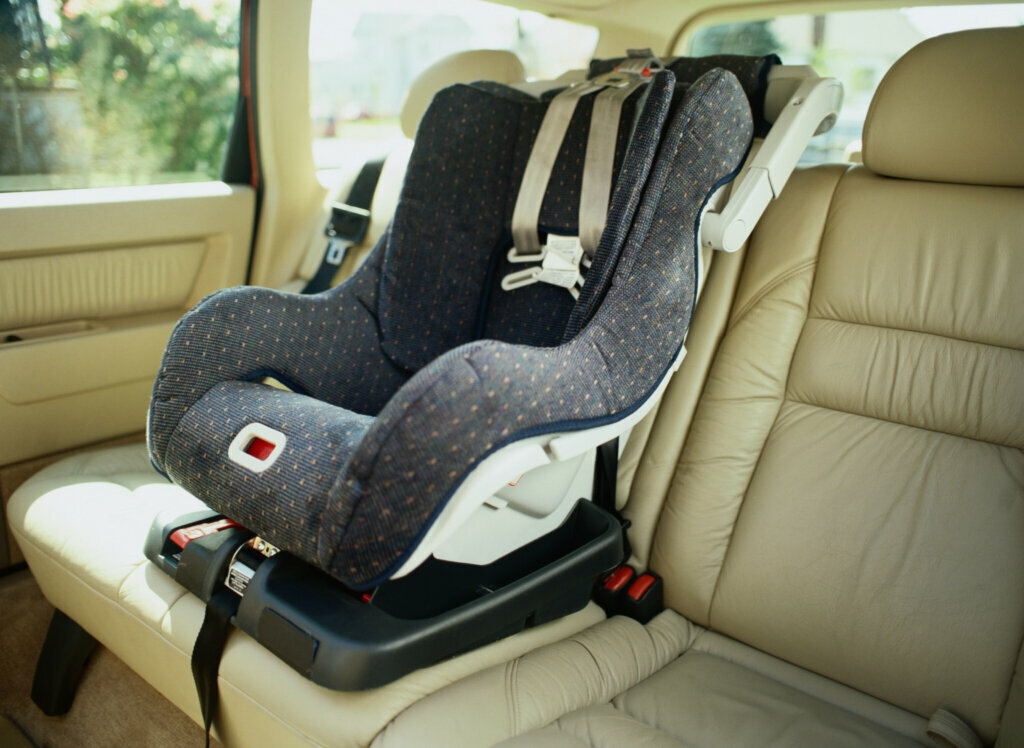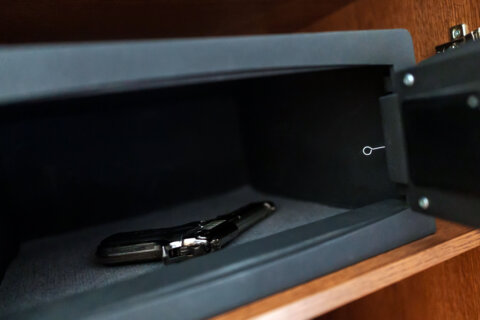
Parents who want to be sure baby car seats are installed safely can visit virtually with technicians for guidance.
On National Seat Check Saturday, which is Sept. 26 between 10 a.m. to 2 p.m., virtual seat checks via video will be available to those who make an appointment.
The service is available any time to residents in the D.C. area, courtesy of Montgomery County, Maryland.
“Make an appointment; we will walk you through the whole process of installing the car seat,” said Anthony Ramirez, program manager for the Montgomery County Fire and Rescue Service Car Seat Program.
Ramirez said the process happens via video chat using Zoom, FaceTime or WhatsApp. On your end, one person holds the phone while a partner makes adjustments.
“There’s about 20-plus car seat manufacturers; they all function the same, but they have little quirks and little differences,” Ramirez said. “We technicians pretty much know all those car seats, so we make sure you know how your particular car seat functions.”
Along with making sure car seats are installed in vehicles correctly, people will learn how best to lock in babies.
“The most common mistake is not harnessing the baby properly,” Ramirez said.
For proper harnessing:
- The straps need to be tight — at the top of the shoulders, you shouldn’t be able to pinch the strap material in your fingers
- The clip should be at armpit chest level — not placed too low near the stomach or too high near the neck
- Rear-facing — the baby’s shoulders should be slightly above where the two shoulder straps come out of the car seat
- Forward-facing — the shoulder straps should come out of the seat slightly above the child’s shoulders.
Ramirez said the second most common mistake is graduating children too early from rear-facing car seats to front facing seats. It is recommended children weigh about 40 pounds before their seat points toward the front of the car.
“It is safer for the babies to be rear facing. It protects their head, their neck and their spine a lot better than forward facing,” Ramirez said. “So, the longer that parents can hold off to move their seat to forward facing the better you’re protecting those very, very sensitive areas of the head, neck and spine.”
Also, don’t try to make car time interesting.
“If it doesn’t come with the car seat, for the most part, you don’t need it,” Ramirez said. “If the seat is in the car, we recommend they don’t have toys, that we don’t have the mirrors.”
No toys? “In a crash, we don’t know if those things are going to come out of the handle and hit the baby in the face,” Ramirez said.
And the mirrors? “If you’re looking at the rearview mirror to look at that mirror on the back of the seat to look at the baby, the one thing you’re not looking at is the road,” Ramirez said.
In the D.C. area, numbers of fire, police and health departments offer help with car seat assembly and installation. However, some, such as Fairfax County, Virginia’s, are temporarily suspended because of the COVID-19 pandemic.







